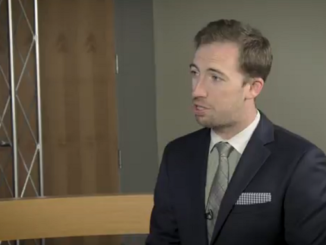
Florida residents picked store shelves clean and long lines formed at gas pumps Wednesday as Hurricane Irma, a Category 5 monster with potentially catastrophic winds of 185 mph, steamed toward the Sunshine State and a possible direct hit on the Miami metropolitan area of nearly 6 million people, The Associated Press reports.
The most powerful hurricane ever recorded in the Atlantic destroyed homes and flooded streets as it roared through a chain of small islands in the northern Caribbean some 1,000 miles from Florida. Forecasters said Irma could strike the Miami area by early Sunday, then rake the entire length of the state’s east coast and push into Georgia and the Carolinas.
“This thing is a buzz saw. I don’t see any way out of it.” warned Colorado State University meteorology professor Phil Klotzbach.
An estimated 25,000 people or more left the Florida Keys after all visitors were ordered to clear out, causing bumper-to-bumper traffic on the single highway that links the chain of low-lying islands to the mainland.
Republican Governor Rick Scott waived tolls on all Florida highways and told people if they were thinking about leaving to “get out now.” But at the same time he acknowledged that “it’s hard to tell people where to go until we know exactly where it will go.”
“Should we leave? A lot of people that I wouldn’t expect to leave are leaving. So, it’s like, ‘Oh, wow!’” said Martie McClain, 66, who lives in the South Florida town of Plantation. Still, she was undecided about going and worried about getting stuck in traffic and running out of gas.
In Miami, the deputy director of the Building Department, Maurice Pons, said that there about two dozen such cranes in the city alone and that they were built to withstand winds up to 145 mph, but not a Category 5 hurricane.
As people rushed to buy up water and other supplies, board up their homes with plywood and fill up their cars, Scott declared a state of emergency and asked the governors of Alabama and Georgia to waive trucking regulations so gasoline tankers can get fuel into Florida quickly to ease shortages. Scott said he anticipates gas stations being restocked by Thursday morning and urged people to take only what they need when fueling up, The Associated Press adds.
It has been almost 25 years since Florida took a hit from a Category 5 storm. Hurricane Andrew, the most expensive natural disaster in U.S. history at the time, struck just south of Miami in 1992 with winds topping 165 mph (265 kph), killing 65 people and inflicting $26 billion in damage.




Be the first to comment